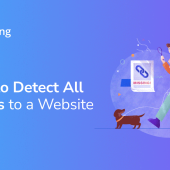Amir Jerbi, CTO of Aqua Security, explores how best to ensure new products hit their mark from day one – and continue to evolve and succeed.
History is littered with failed product launches, which, despite significant investment, simply haven’t paid off. From New Coke in the 80s to the Apple Newton in the 90s to the more recent collapse of the billion-dollar Quibi microstreaming platform, there are plenty of examples of how big businesses have misread their market and consumer base.
Bringing the experience of numerous product launches and personal patents, I have some first-hand knowledge of how best to bring a new concept to market – and some of the common pitfalls. At its simplest, there is a five-step framework which will help you meet your objectives when it comes to introducing a new product. Let’s explore these in more detail:
Stage Zero: Research, experiment, and learn
Begin by understanding the problem you are trying to solve in detail. Interview customers and prospects to find out what specific challenges they are facing. Evaluate the competition and identify gaps in the market.
From a personal perspective, when we were founding Aqua, we spotted the mass migration to cloud-native technologies and knew it would open the door for a major opportunity to do security better. It was clear that there was a need for a whole new purpose-built, cloud-native approach, and so that’s what we developed.
Stage One: Build your minimal viable product (MVP)
Build a product with the minimal amount of functionality and capability that will do the job for the end user. At this stage, you don’t need to solve all the problems of every customer. How do you know what will be the minimal viable product? Choose between five and ten design or beta partners who are representative of your target customer in terms of size, vertical, services, and so on, and build an MVP that will be sufficient for their needs.
Collaborate with these partners to test theories and develop an MVP over three to six months with continuous improvement and innovation. Remember to capture the process in detail.
Stage Two: Fail fast and iterate
With your feedback gathered and your MVP matured, it’s time for version 1.0; start deploying in real world environments. This will produce further insight to shape product evolution and help you define a robust product roadmap. At this stage you should work quickly, release small increments of improvement, and learn to fail fast by removing and changing things that are not working.
Essentially, this stage is about iterating your product to meet demand. At the same time, be careful of over-developing your features until you know there is a demand for them. Customers will want different things so finding a balance is key, because clearly not all features can be included at once. Prioritise innovation and features that produce a genuine competitive edge.
Stage Three: Scale the product up
By now, if you have progressed the development and innovation of your product, you should be gaining market share and attention. It’s time to shift your focus and make your product enterprise-class and ready for widespread deployment. This means investing in features which ensure your product is fit for integrating strongly with other tools in customer environments, so work closely with existing customers to understand the requirements and make it repeatable elsewhere.
This may well entail revisiting and refreshing your roadmap to include more detail, moving from a quarterly to a monthly forecast. It’s worth bearing in mind that your roadmap is never set in stone but should be fluid and responsive to change.
Stage Four: Continuous innovation
Where companies often fail is by sitting on their laurels – their product is a great success, everyone is talking about it, what could possibly go wrong? Put simply, the problem you were solving last year might have changed; there might be better, faster ways to solve that problem and other companies developing appropriate solutions.
If we look at some of the corporate giants of yesteryear, such as those in the early PDA or smart device days, they were leading the market for years and simply lost their way, outpaced by newer technology. So, continue to hold conversations with customers, continue to iterate, and continue to monitor the competitive landscape.
If you follow these five key stages, you should be in a strong position to continue to develop and sell your product; however, there are pitfalls at every step so beware. The most common failure I see is entrepreneurs who fall in love with their vision and develop a solution without the due diligence of gathering feedback and building incrementally.
At Aqua, we did this once ourselves. In year two, we launched a personal vulnerability scanner – its name was Peekr. We created it based on a hunch from a single potential customer interaction. We didn’t take the time to canvas other customers and after three months were ready for the big launch. Unsurprisingly it did not get any traction, not even from the customer that had originally sparked the project. But, we learned from it, moved on, and are better because of it.
And that is the key: learn from your mistakes but don’t be afraid to make them. Creating a viable, scalable product needs accountable growth, a defined lifecycle, and a robust roadmap. It can’t involve shortcuts and requires customer involvement at each stage. If you follow these steps, then you could be well on your way to launching a smash hit.





